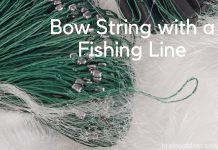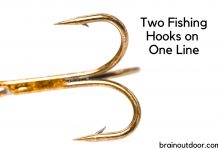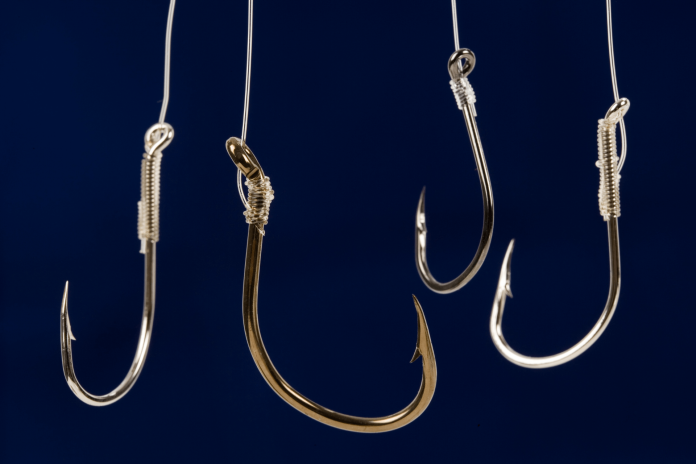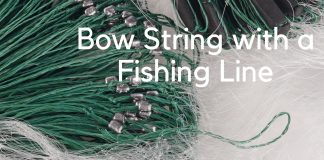Having to deal with loose knots or not knowing how to tie them is so annoying. Having the basics and learning how to do it by yourself is much better and time-saving. Many fishing knots are not complicated and are easy to tie. Fishing knots are of different sizes, and each gets to be tied differently. As an angler, learning how to tie different fishing knots is advantageous anytime you need some fish. Below is how to tie various fishing knots;

Tips to Tie a Fishing Knot
1. Double surgeon loop
A double surgeon knot means it’s a surgeon knot that gets wrapped twice. It’ a double hand knot and the knot is used in fly fishing. Take the end of the line and fold it over. Doing this creates a double line. Tie one overhand knot. Take the loop and let it pass through the hole in the overhand knot a second time. Tighten the knot.
2. Rapala Knot
With an overhand knot, tie it on top of the tag end of the line. Make the tag pass through the eye of the hook first. Secondly, run it through the overhand knot. By now, you should have made a loop. Let the tag and pass it through the created loop. Tighten the knot by pulling on the hook, tag end, line, or lure.
3. Clinch Knot
Take an end of the fishing line and pass it through the hook’s eye. It will create a loop at the hook. Wrap around the end of the line around six times. To make a knot, the end of the line needs to pass through the loop. It will create another loop. For an improved clinch knot, pass the end line through the second loop made before this step. Lubricate to moisten and then pull tight. Trim off the excess line.

4. Improved clinch
This type of knot is tied when you want to secure a finishing line to the lure. It is easy to make, and the knot comes out strong. Use it with monofilament or a braided finishing line. You can sometimes call it a salmon knot. What differentiates it from a normal clinch knot is the technique used. An improved clinch has an additional tuck after the last turn.
Thread the hook’s eye and wrap around, leaving a loose end behind. Wrap around the loose around seven times. After seven wraps, thread the loop that is near the hooks eye. Move it back around the loose section in the line. Pull through the ends; both of them, until you feel it’s tight. Trim if the loose end looks long.
5. Palomar knot
This knot secures a fishing line to the lure. It does not pull out easily and is great for light fishing lines. You can custom this knot when you want something to tie to a small hook.
To tie this knot, take about five to six inches of line and double it. Next, you have to thread it through the hooks eye. Tie an overhand knot on it. Your fishing hook should be loosely hanging. Take the end of the loop and pull it, ensuring it passes over the hook. Lubricate the line and then pull all ends to tighten the knot. Trim off the excess line with scissors.
6. Blood knot
This knot is for joining the monofilament nylon line. Two lines join together when tying the knot.
Spread the ends of each line, lining them up. Take the first line and wrap around the next five times. Snugly pull each line tight.
7. Wireline to motor knot
This knot attaches the wireline to the monofilament. To tie it, make a bend at the end of the folding wire line over itself four times. Let the monofilament line through the bend in the middle. Wrap one more time around the bottom bend. Turn around the monofilament seven times, passing the end below the wire.
8. Snelling a hook
Use this knot when you want to attach the monofilament to the hook. Let the end of the line pass through the hooks eye two times. It should create a loop hanging the hook. Wrap the loop about ten times around the hoop. Ensure it forms tight coils. Use your fingers to hold it in place. Pull up the line and stop when the loop under the coil gets snug.
9. Turle Knot
Anglers use this knot for fly fishing. Create a tiny loop and wrap the end twice. Pull the end while holding the big loop to tighten. Pass the bigger loop around the hook. Lubricate and then pull the end to tighten the knot.
10. Tucked sheet bend knot
This knot easily joins two lines together. It attaches the line to a different loop. Take the end of the line and pass it through the loop and make a sheet bend knot. On the sheet bend’s loop, let the end of the line through it. Tighten until you feel it snug.
Fishing knots need to be pulled tight for a tighter knot. Ensure you lubricate before pulling tight. You can choose to lubricate either with water, cooking oil, or saliva if you are comfortable with it. Most people prefer saliva over other lubricants. When trimming, do it against the knot. Trim the loose ends closer to the knot. With continuous, you will find it easy to tying fishing knots. It will become a great hobby and make you love fishing at any time.
Conclusion
There is no one specific way of tying a fishing knot. Each knot is approached with a different technique when securing the knot. These knots are simple and easy to understand. However, it requires practice to get the knots right if you are not conversant with all of them. You don’t have to know how to tie all of them at once but learning them increases your fishing experience. If you have meant to know how to tie fishing knots, find this article helpful. Find the one that works best for you
































